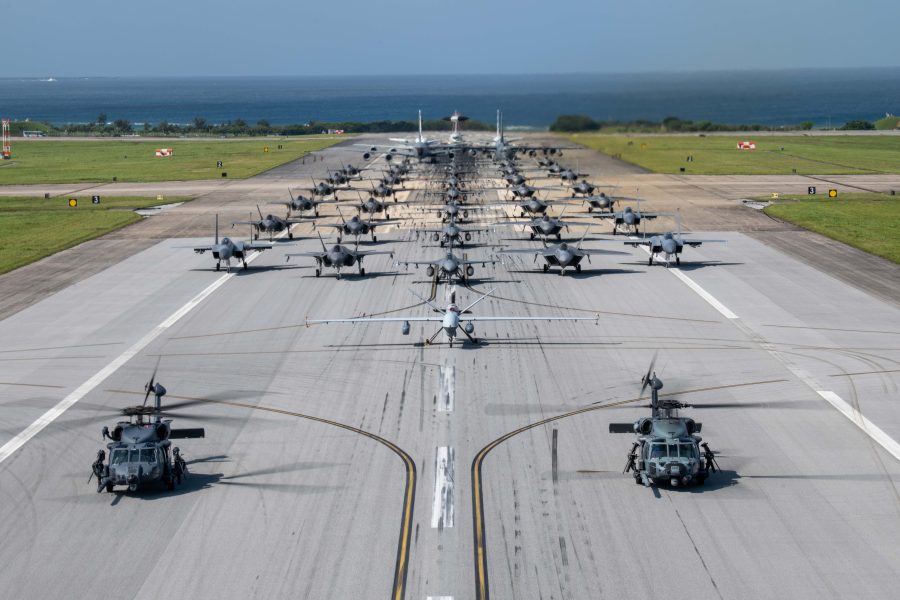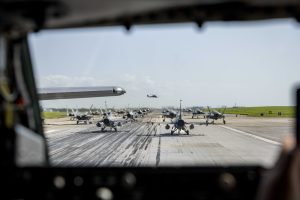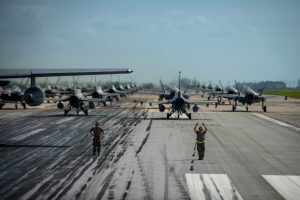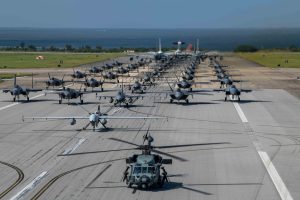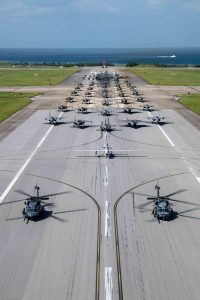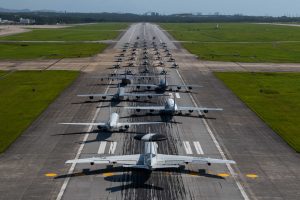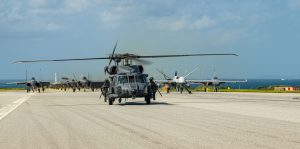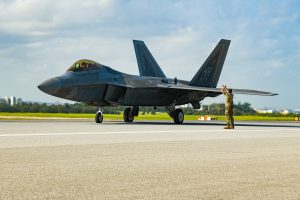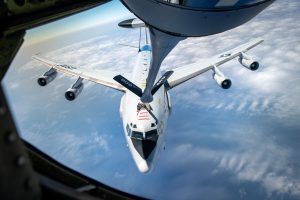Kadena Air Base, Japan, is exchanging F-35s and F-15Cs for F-22s and F-16s in the base’s latest rotation of fighters on Okinawa, a strategic location just 400 miles east of Taiwan.
Kadena’s 18th Wing released a statement and images showing the Raptors are from the 199th and 19th Fighter Squadrons of Joint Base Pearl Harbor-Hickam, Hawaii. It did not disclose from where the F-16s came.
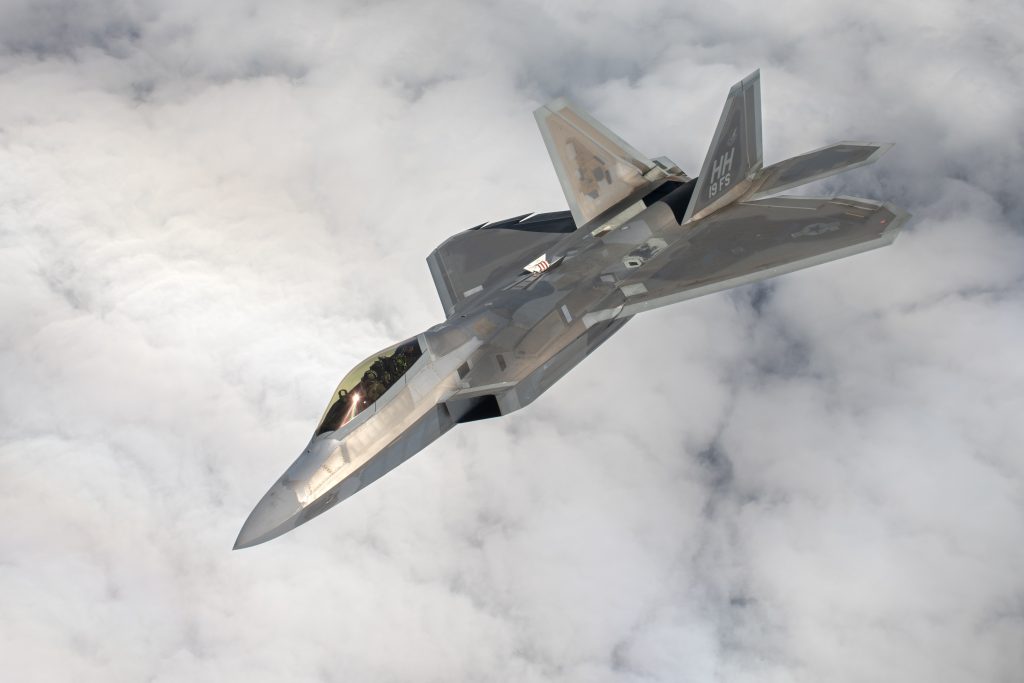
Since the Air Force announced in October 2022 that it was retiring all 48 of Kadena’s aging F-15C/D aircraft after more than 40 years of continuous Eagle operations, the service has kept a steady fighter presence on the island through continuous rotations. Among them, the base previously hosted F-22s from the 3rd Wing at Joint Base Elmendorf-Richardson, Alaska, and F-16s from the 480th Fighter Wing at Spangdahlem Air Base, Germany.
It’s unclear how many of Kadena’s original Eagles are still at the base today, but F-15s from the California and Louisiana Air National Guard that deployed there in October are now leaving, as are F-35s from Hill Air Force Base, Utah, that arrived in November.
Before they left and after the new fighters arrived, however, Kadena showcased its array of airpower in an “Elephant Walk” lineup, seemingly establishing a tradition of showcasing each fighter type during its rotation through Japan.
This latest elephant walk shows:
- Four F-15Cs
- Eight F-16Cs
- 10 F-35As
- 11 F-22As
- One MQ-9 Reaper
- Two HH-60G Pave Hawks
- Two KC-135 Stratotankers
- One MC-130J Commando II
- One RC-135 Rivet
- One E-3 Sentry
- One U.S. Navy P-8 Poseidon
According to a local media report, one of the F-22s that came from Hawaii was involved in an incident upon arriving at the base at 10:30 a.m. local time on April 11. The report showed a video of the Raptor being towed from the runway with its engine turned off. The Okinawa Defense Bureau issued a statement confirming that the Raptor had a landing gear issue during the towing process, resulting in damage to the fuselage, as the jet’s nose was dragged along the ground.
While the latest fighter rotation took place, Japanese Prime Minister Kishida Fumio met with President Joe Biden halfway across the globe in Washington D.C. Along with other moves to bolster the alliance, the leaders announced a new defense network system with Australia.
“I’m also pleased to announce that for the first time, Japan and the United States and Australia will create a networked system of air, missile, and defense architecture,” Biden during a joint press conference April 10. “We’re also looking forward to standing up a trilateral military exercise with Japan and the United Kingdom.”
The tightening relationship between the U.S. and Japan comes as China continues to build up its capabilities. Kishida emphasized dedication to collaboratively “resolutely defend and bolster a free and open international order” based on the rule of law, but highlighted Japan’s ongoing dialogue with Beijing and its readiness to cooperate with the nation in addressing recent tensions. Biden, too, reiterated the importance of talks with Beijing to mitigate any “misunderstandings or miscalculations,” noting a recent positive phone call with Chinese President Xi Jinping regarding the establishment of a communication network.
“Our defense and security ties with Japan form the core of our alliances and are the cornerstone of regional peace and security in the Indo-Pacific,” Pentagon press secretary Air Force Maj. Gen. Pat Ryder said during a briefing on April 11. “Recognizing that the alliance has reached new heights, we plan to further bolster our defense and security cooperation to allow for greater coordination and integration.”
